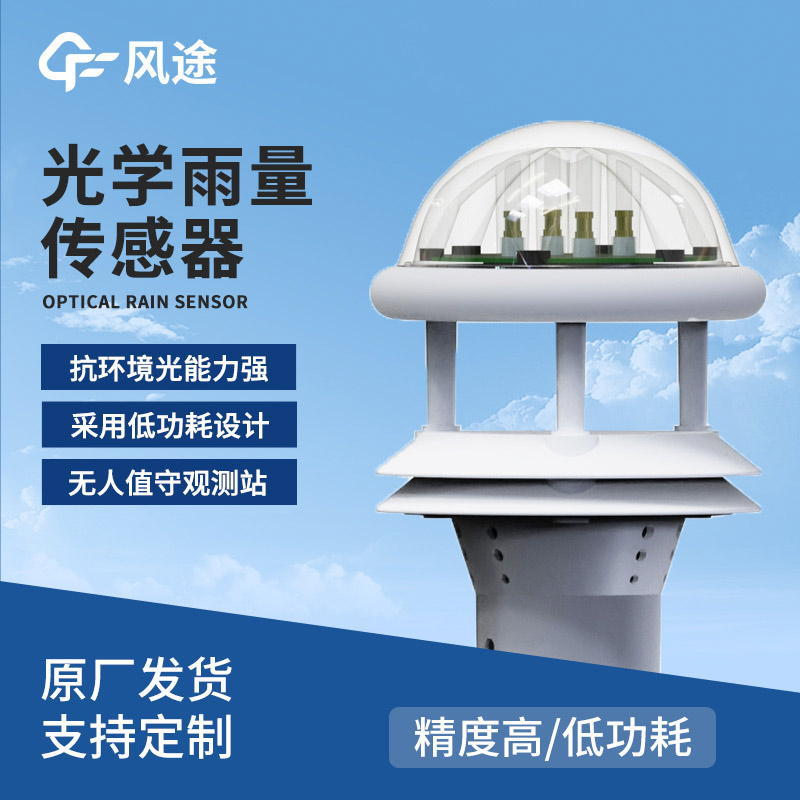Tianyi Sensor IOT Technology Co., Ltd
Sales Manager:Ms. Emily Wang
Cel,Whatsapp,Wechat:+86 15898932201
Email:info@fengtutec.com
Add:No. 155 Optoelectronic Industry Accelerator, Gaoxin District, Weifang, Shandong, China

Sales Manager:Ms. Emily Wang
Cel,Whatsapp,Wechat:+86 15898932201
Email:info@fengtutec.com
Add:No. 155 Optoelectronic Industry Accelerator, Gaoxin District, Weifang, Shandong, China
time:2025-05-29 09:04:36 source:Weather Station viewed:208 time
With the arrival of the rainy season, frequent rainfall is prone to triggering geological disasters such as floods and landslides, posing a huge threat to people's lives and property safety as well as social and economic development. In order to timely grasp the rainfall situation, scientifically prevent disasters, and accurately monitor rainfall, precise rainfall monitoring has become a very important task. Rainfall monitoring stations can collect and transmit rainfall data in real time and accurately, providing real-time data for flood control and drought relief, water resource allocation and other work.
Rainfall monitoring stations realize rainfall monitoring by carrying a variety of sensors, mainly including Stainless Steel Tipping Bucket Rain Gauge, radar rain gauge, piezoelectric rain gauge and Optical Rain Gauge.
Stainless Steel Tipping Bucket Rain Gauge is a relatively common rainfall monitoring device. It consists of a rain receiver, funnel, tipping bucket, counting device and other parts. Rainwater enters the funnel through the rain receiver. When one side of the tipping bucket receives a certain amount of rainwater, the tipping bucket will tip over, pour out the rainwater, and at the same time trigger the counting device to record once. By calculating the number of tip-overs of the tipping bucket, the amount of rainfall can be obtained.
Radar rain gauges use electromagnetic waves to detect rainfall. They emit electromagnetic waves into the air. When the electromagnetic waves encounter raindrops, they will be reflected. The radar receives the reflected electromagnetic waves and calculates the size, speed and number of raindrops based on the changes in the signal, and then infers the rainfall. Radar rain gauges have a wide monitoring range and can real-time obtain rainfall information over large areas.
Piezoelectric rain gauges work based on the piezoelectric effect. When raindrops hit the surface of the sensor, they generate pressure, causing the piezoelectric material to deform, thereby generating an electrical signal. By analyzing and processing the electrical signal, the amount of rainfall can be calculated. This type of rain gauge has a fast response speed and high measurement accuracy.
Optical Rain Gauges use optical principles for rainfall monitoring. They detect raindrops by transmitting and receiving light signals. When raindrops pass through the light's propagation path, they block part of the light, causing a change in the intensity of the light signal received by the receiving end. Based on the change in the intensity of the light signal, the amount of rainfall can be calculated. Optical Rain Gauges have the characteristic of non-contact measurement and are less susceptible to external environmental interference.

The traditional triangle odor bag method mainly relies on the subjective judgment of professional odor assessors, which is not only cumbersome and costly to operate, but also difficult to achieve real-time monitoring and traceability. The emergence of the Odor Online Monitor has overcome these short...
The Negative Oxygen Ion Monitoring Station features comprehensive multi-factor monitoring capabilities. It can conduct real-time monitoring of multiple environmental factors simultaneously and flexibly add or remove monitoring items according to actual usage needs, so as to adapt to monitoring requi...
As meteorological monitoring needs become increasingly diverse, traditional meteorological equipment faces challenges in installation convenience, data comprehensiveness, and environmental adaptability. Conventional miniature weather instruments often suffer from measurement errors caused by sensor...
Meteorology and soil moisture are two fundamental elements in agriculture. Meteorology determines the "timing" of agriculture, while soil moisture reflects the "favorable geographical conditions". Together, they form the environmental framework for crop growth.The dynamic changes...